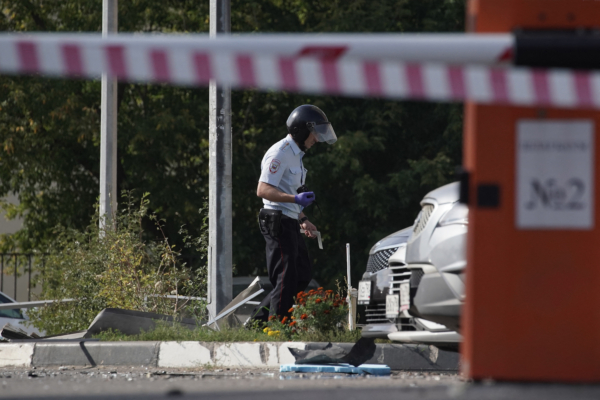In a recent anti-drone military exercise held by NATO, Ukraine was invited to share its unmanned aerial combat experience in the Russia-Ukraine war. This move directly crossed Russia’s red line, according to military experts who believe that NATO’s decision was based on the understanding that Russia’s red line is false.
The NATO anti-drone exercise, which took place from September 10 to September 20, attracted participation from 19 NATO member countries and 3 partner countries, totaling more than 450 individuals. The main focus of the exercise was to disrupt or infiltrate drone systems using methods such as hacking and launchers to counter drone threats.
NATO stated that integrating anti-drone technology into NATO’s Integrated Air and Missile Defense (IAMD) is crucial for enhancing NATO’s deterrence and defense posture. By actively involving Ukraine in the exercise, NATO aims to learn from Ukraine’s experience in combating Russian drones during the conflict.
Public opinion in Ukraine widely perceives this as a significant step forward in defense cooperation among Ukraine, the European Union, and NATO.
Military commentator Charlie Shan believes that NATO’s acceptance of Ukraine is not just a symbolic gesture but a direct challenge to Russia’s so-called red line. He told the Epoch Times, “One of the reasons Russia launched the invasion of Ukraine was to prevent Ukraine from joining NATO, which the Kremlin has set as its biggest red line. Ukraine’s participation in NATO exercises can be seen as a practical step in crossing this red line and sending a clear message to Russia that if the war continues, it will eventually face the NATO alliance. The outcome may not be Russia’s warning of ‘war spreading across Europe,’ but more likely a quick end to the conflict with Russia’s failure.”
“Russia has repeatedly warned that NATO’s involvement in the Russia-Ukraine war would lead to direct conflict, including nuclear war. However, in reality, NATO has almost immediately intervened in the war and continuously expanded its military support to Ukraine (almost in all areas). The red line set by Russia has been repeatedly crossed, and NATO countries have realized it is a false red line,” he said.
Both in the Russia-Ukraine war and the ongoing conflict in Ha, drones have played a significant role on the battlefield, necessitating increased attention to drone and anti-drone technology development. Matt Roper, Director of NATO’s Joint Intelligence, Surveillance, and Reconnaissance Center, stated on September 20, “NATO takes the drone threat very, very seriously.”
Defense ministers from NATO member countries Romania, Latvia, and Poland called on allies on September 18 to immediately implement “NATO’s air defense rotation mode” to strengthen NATO’s deterrence, surveillance, reconnaissance, and aerial patrol activities in the alliance’s eastern flank.
Claudio Palestini, Co-Chair of NATO’s UAV Systems Working Group, stated on September 20 that the exercise aimed to study how first-person view (FPV) civilian drones can be transformed into lethal weapons in modern warfare.
During the exercise, two FPV drones were used to track a speeding military all-terrain vehicle, while signal jammers were employed to attack and disrupt these drones, rendering them ineffective for combat and tracking, thus evaluating the effectiveness of anti-drone operations.
Currently, electronic jamming is widely used in the Russia-Ukraine war. Ukrainian defense technology developers stated that this method is less effective against long-range reconnaissance drones. However, Ukraine has developed suicide drones to destroy such aircraft, mainly due to the lower cost of these drones compared to launching missiles.
Moreover, on September 18, Ukraine conducted a large-scale drone attack on Russian forces, causing a major arsenal to explode and shake violently. This operation led Putin on the 19th to order the military to increase drone production tenfold within the year, reaching an astonishing 1.4 million drones, to counter Ukraine’s drone forces.
Shan commented, “After two and a half years of the Russia-Ukraine war, NATO has come to realize the importance of drones in warfare. Drones, unlike other advanced weapons systems, do not have insurmountable technological barriers, allowing for rapid development in a short period of time.”

